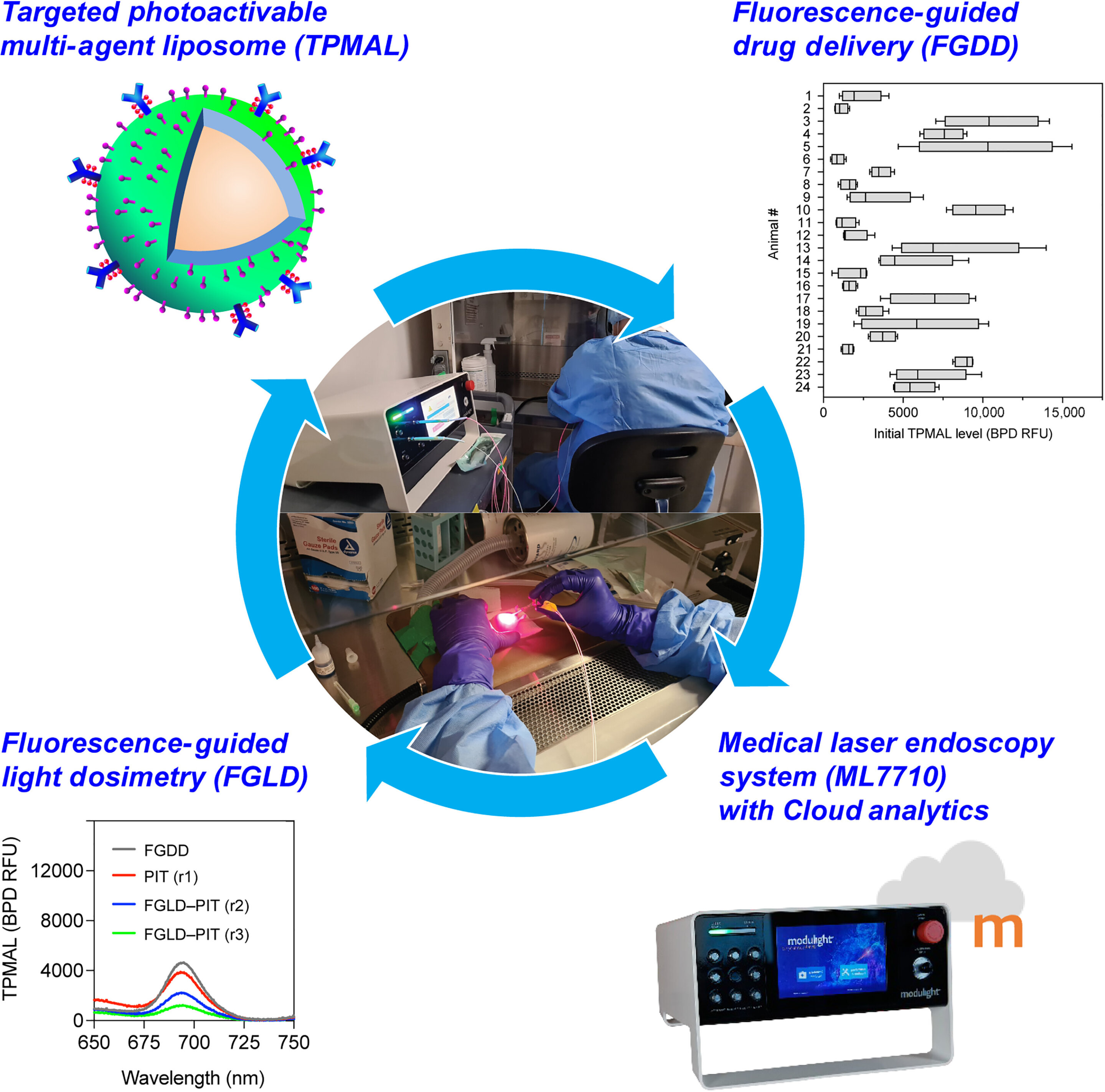Fluorescence-guided intervention strategies can enhance standard therapies to detect and treat microscopic tumors, thereby preventing lethal recurrence. Cancer biologists have made significant progress in photoimmunotherapy and nanotechnology for the treatment of metastasis. However, the effectiveness of these techniques is limited due to heterogeneous effects.
In a recent report published in Science Advances, Barry J. Liang and a team of researchers in bioengineering, cell biology, and photomedicine at the University of Maryland, Baltimore, Harvard Medical School U.S., and the Modulight Corporation, Finland, integrated three technical advances for fluorescence-guided intervention in targeted photo-activatable multiagent liposome laser endoscopy to improve photoimmunotherapy.
The photoactivatable multiagent liposome consisted of a nanoliposome labeled with fluorophores to track and photosensitize immunoconjugates for photoimmunotherapy. During the experiments, the researchers conducted fluorescence-guided drug delivery and fluorescence-guided light dosimetry to investigate peritoneal carcinomatosis in mouse models.
Fluorescence-guided drug delivery methods revealed that the targeted photoactivatable multiagent liposome enhanced drug delivery to metastases by 14-fold. The team combined these interventional methods to vary the treatment response for tumor control without side effects.
Advanced ovarian cancer can be virtually incurable with existing approaches in surgery and chemotherapy due to peritoneal metastasis, incomplete resection, and drug resistance. While tumor recurrence is almost universal, the five-year survival rate of 30% has not significantly changed in the past three decades.
2023-09-26 00:24:03
Post from phys.org rnrn
